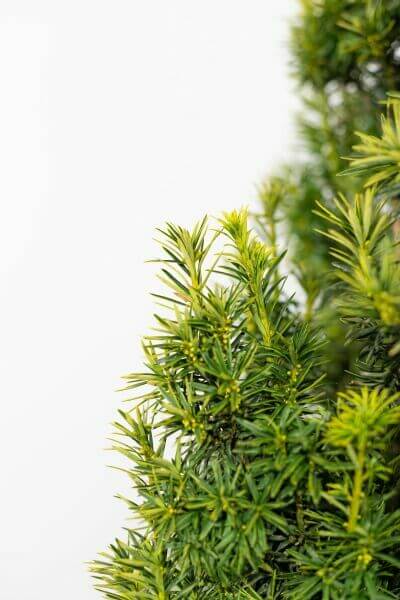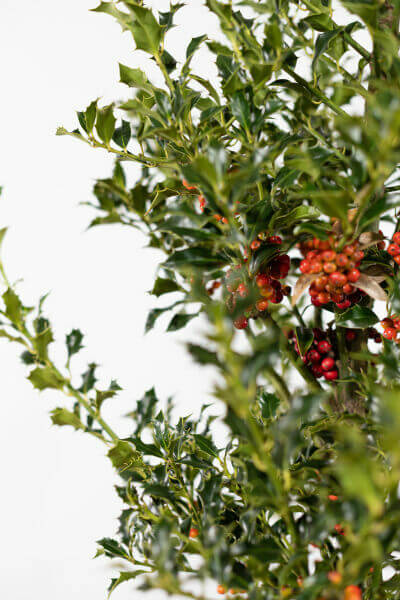Best Hedge Plants For Sun And Shade
Best Hedge Plants For Sun And Shade
Blog Article
Best Hedging Plants For Rooftop Gardens
Improve your garden's appeal with lush hedge ranges such as Yew (Taxus), Thuja, Laurel, Photinia, and Bamboo, celebrated for their structural stability and environmental benefits.
Yew and Thuja offer evergreen coverage and winter season resilience, while Laurel provides quick growth and broad, aromatic leaves.
Photinia adds seasonal appeal with its lively red foliage, and Bamboo lends a low-maintenance, peaceful atmosphere.
These hedges improve air quality, minimize sound, and create tranquil, private areas.
Correct planting, spacing, and maintenance guarantee energetic development and ecological harmony.
Check out how these lavish varieties can elevate your garden's charm and wellness.
Secret Takeaways
Change Your Garden With Lush Hedge Ranges
- Select Yew for its dense, evergreen growth and unrivaled durability.
- Go with Laurel for its quick growth and broad leaves, ensuring quick privacy.
- Select Photinia for its dynamic seasonal foliage, which turns a striking dark red.
- Make use of Bamboo for a low-maintenance, winter-hardy hedge with visual appeal.
- Area plants 2-3 per meter and prune frequently for optimum growth and health.
Popular Hedge Plants
When transforming a garden with lush hedge varieties, it's important to consider popular hedge plants such as Yew, Thuja, Laurel, and Photinia due to their distinct qualities and benefits.
Yew (Taxus) is highly esteemed for its longevity and dense, green growth, making it a prime choice for enduring landscapes.
Thuja is noted for its evergreen foliage and robust winter season strength.
Photinia includes seasonal vibrancy with red leaves that darken with time, developing vibrant visual appeal.
Laurel provides fast growth and fragrant, broad leaves, perfect for fast personal privacy.
Furthermore, Bamboo is an outstanding choice for ambiance, offering a low-maintenance, winter-hardy alternative that enhances the garden's visual with its classy, swaying walking canes.
These choices accommodate a variety of horticultural requirements and choices.
Benefits of Garden Hedges
Garden hedges offer a multitude of advantages, making them a valuable addition to any landscape. These natural barriers are cost-effective to carry out and supply considerable wind protection, boosting air flow and contributing to sound reduction. The thick foliage of hedges like Thuja and Beech guarantees privacy by blocking exposure, creating a remote and peaceful environment.
Hedges also play an important role in microclimate guideline, offering a steady environment that promotes plant development and lessens temperature level changes. Their intricate leaf structures filter contaminants, improving air quality and contributing to a much healthier garden community.
Additionally, hedges excel in sound reduction, taking in and deflecting acoustic waves to lower ambient noise levels. This double functionality of offering both visual and acoustic personal privacy enhances the total tranquility and aesthetic appeal of any garden.
Planting and Maintenance Tips
For a successful hedge, careful preparation of the planting location is crucial. Guarantee the soil has correct pH and drainage to support strong root development.
Area the plants properly for the chosen types. Water the hedge regularly during its initial development stage, changing as needed with seasonal changes.
Execute a organized pest control and disease prevention method, utilizing chemical or organic treatments when required. Regularly examine for aphids, termites, and fungal infections.
Apply mulch to maintain wetness and suppress weeds. Seasonal pruning promotes dense growth and air flow, vital for plant health.
Following these standards will assist you cultivate a lively, well-maintained hedge that improves the charm of your garden.
Spacing and Trimming Guidelines
Spacing and Cutting Standards
Appropriate spacing and cutting are important for cultivating healthy, aesthetically appealing hedges. Appropriate spacing makes sure each plant gets enough nutrients, light, and air flow.
Follow these standards for optimum hedge upkeep:
- Spacing: Position hedge plants 2-3 plants per meter to motivate robust growth.
- Pruning Methods: Regular pruning is essential for maintaining desired hedge height and shape. Cut brand-new development in summertime and cut back older wood during winter.
- Seasonal Care: Change cutting schedules and approaches according to seasonal requirements to guarantee plant health.
- Hedge Height: Routinely monitor and cut to keep the preferred hedge height and achieve uniform aesthetics.
Adhering to these actions will guarantee your hedge flourishes, enhancing both the appeal and performance of your garden.
Selecting the Right Hedge
Choosing the Right Hedge
Picking the suitable hedge involves examining elements such as fully grown height, foliage density, and environmental resilience. Successful hedge plant choice needs comprehending each types' development qualities and site-specific versatility.
For example, Yew (Taxus) offers exceptional durability and thick growth, while Thuja is notable for its winter strength. In addition, considering maintenance requirements is crucial; fast-growing types like Laurel or Privet demand routine trimming, whereas low-maintenance choices like Bamboo or Ivy might be more effective for those seeking very little maintenance.
Environmental aspects such as soil type, light availability, and moisture conditions should likewise assist the selection procedure. This careful method makes sure the selected hedges will grow, providing both functional and visual advantages to the garden landscape.
Delivery and Planting Recommendations
To guarantee your hedge plants flourish, they must be provided by specialized couriers and planted quickly upon arrival.
Follow these necessary steps for successful planting:
- Soil Preparation: Enhance the soil with raw material to improve drainage and nutrient content.
- Planting Depth: Produce a trench two times the width and equivalent to the depth of the root ball.
- Watering Techniques: Water thoroughly after planting, keeping the soil consistently damp however not filled.
- Mulching: Use a layer of mulch to retain moisture and suppress weeds.
Client Assistance and Service
Offered the vital function of prompt assistance in horticultural pursuits, our customer support team is offered six days a week through telephone, email, and social networks to provide professional suggestions and swiftly attend to any issues. Their devotion to quick response times ensures customer complete satisfaction by dealing with inquiries associated with plant health, ideal planting techniques, and maintenance schedules.

This detailed assistance system, reinforced by an outstanding 9.3/ 10 client score, highlights our dedication to boosting the gardening experience for every single client.
Frequently Asked Concerns
How Long Does It Take for Hedge Plants to Establish?
Hedge plants typically require one to three years to become completely established, with the exact duration varying by species and growing conditions.
Effective care throughout this critical duration is necessary for robust development. Consistent watering, watchful weed control, and proper fertilizer application are essential in promoting strong root advancement.
For instance, fast-growing types like Laurel might establish faster, while slower-growing varieties such as Yew might take longer. Diligent upkeep speeds up the facility process, resulting in dense and healthy hedges.
What Are the Finest Hedge Plants for Privacy?
The question of the very best hedge plants for personal privacy includes assessing evergreen and deciduous choices.
Evergreen hedges like Thuja, Laurel, and Cypress provide year-round protection, making sure continuous privacy.
On the other hand, deciduous hedges such as Beech use seasonal privacy, shedding leaves in colder months.
Secret maintenance tips for personal privacy hedges consist of routine trimming, fertilizing in spring, and correct spacing-- usually 2 to 3 plants per meter.
Furthermore, consistent watering and thorough weed removal are vital for promoting healthy, thick growth.
Can Hedge Plants Bring In Wildlife to My Garden?
Yes, hedge plants can attract wildlife to your garden by supplying important benefits like shelter, food, and nesting websites, thereby boosting local biodiversity. Yew, holly, and laurel are exceptional for attracting birds, while ivy supports a range of insects.
Nevertheless, it is necessary to keep in mind that there are some drawbacks, such as increased upkeep to handle bugs and routine upkeep. Carefully picking and preserving hedge ranges can help balance these downsides and benefits, ultimately cultivating a vibrant and sustainable environment in your garden.
Are There Any Flowering Hedge Plants Available?
Yes, there are flowering hedge plants readily available that can enhance the beauty of your garden.
For instance, Elaeagnus, likewise referred to as Olive Willow, produces fragrant white flowers in the fall, including a touch of sophistication.
Photinia, another popular choice, showcases vibrant red leaves that develop into an abundant green, creating a dynamic visual effect throughout the seasons.
To guarantee these plants grow, it's important to practice appropriate pruning methods and seasonal upkeep, such as cutting brand-new growth in the summer and cutting back in the winter.
These steps will assist preserve the health and visual appeal of your blooming hedges.
How Do I Avoid Bugs in My Hedge Plants?
To avoid bugs in hedge plants, use natural bug control approaches and keep correct hedge care. Present beneficial insects like ladybugs, which prey on harmful pests, to develop a well balanced environment.
Frequently check your hedges for indications of problem and promptly remove any afflicted parts to avoid the spread. Guarantee the health of your hedges by applying balanced fertilizers and providing adequate water.
Make use of mulching to maintain soil wetness and appropriate spacing to decrease plant stress and promote robust development. These practices jointly assist in lessening insect issues and keeping a healthy hedge.
Conclusion
In essence, picking the best hedge varieties such as Yew, Thuja, and Laurel can change any garden into a serene haven. These plants provide year-round plant, improve aesthetic appeal, and deal useful benefits like sound decrease and wind protection.
Proper planting strategies, accurate spacing, constant watering, and seasonal cutting are important for optimum development.
Reputable shipment services and professional customer assistance ensure a smooth experience from purchase to planting, making it simpler than ever to raise your outdoor area.
Garden hedges provide a multitude of advantages, making them a valuable addition to read more any landscape. These natural barriers are cost-efficient to execute and supply considerable wind defense, improving air blood circulation and contributing to noise decrease. The dense foliage of hedges like Thuja and Beech makes sure privacy by blocking visibility, producing a remote and serene environment.

Pruning Techniques: Routine pruning is necessary for preserving desired hedge height and shape. Cut brand-new growth in summer season and cut back older wood throughout winter.
Report this page